Sustainable Energy — without the hot air

Sign up for access to the world's latest research
Abstract
The quest for safe, secure and sustainable energy poses one of the most critical challenges of our age. But how much energy do we need, and can we get it all from renewable sources? David MacKay sets out to find the answer through a forensic numerical analysis of what we use and what we can produce. His conclusions starkly reveal the difficult choices that must urgently be taken and readers interested in how we will power our society in the future will find this an illuminating read. For anyone with influence on energy policy, whether in government, business or a campaign group, this book should be compulsory reading. This is a technically precise and readable account of the challenges ahead. It will be a core reference on my shelf for many years to come. Tony Juniper Former Executive Director, Friends of the Earth Engagingly written, packed with useful information, and refreshingly factual. Peter Ainsworth MP Shadow Secretary of State for Environment, Food, and Rural Affairs David MacKay sets out to dispel the half truths, distortions and nonsense which make up so much of what we're told about climate change and our energy needs. This book is readable, accessible and thorough. He cuts through unfounded opinion and takes us to facts and figures which speak for themselves. It's a useful guide for both layman and expert. I heartily recommend it. Graham Stuart MP This remarkable book from an expert in the energy field sets out, with enormous clarity and objectivity, the various alternative low-carbon pathways that are open to us. Policy makers, researchers, private sector decision makers, and NGOs, all will benefit from these words of wisdom.





















































![opyright David |] C MacKay 2009. This electronic copy is provided, free, for personal use only. See www.withouthotair.co!
may be true, but efficiency should not be confused with delivered power.](https://figures.academia-assets.com/51383627/figure_052.jpg)











































![Sopyright David |] C MacKay 2009. This electronic copy is provided, free, for personal use only. See www.withouthotair.cor](https://figures.academia-assets.com/51383627/figure_090.jpg)





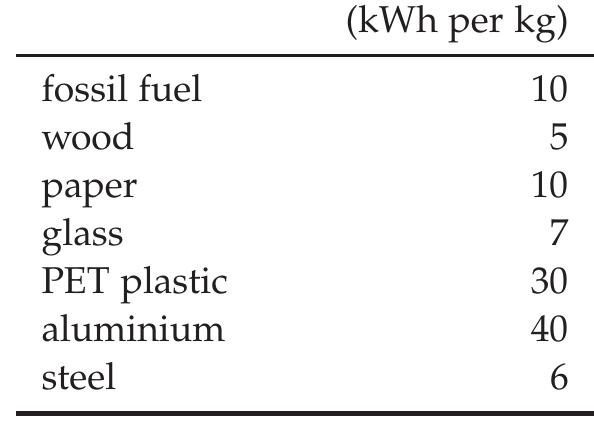























![Sopyright David |] C MacKay 2009. This electronic copy is provided, free, for personal use only. See www.withouthotair.con](https://figures.academia-assets.com/51383627/figure_117.jpg)


![-opyright David |] C MacKay 2009. This electronic copy is provided, free, for personal use only. See www.withouthotair.cor](https://figures.academia-assets.com/51383627/figure_120.jpg)
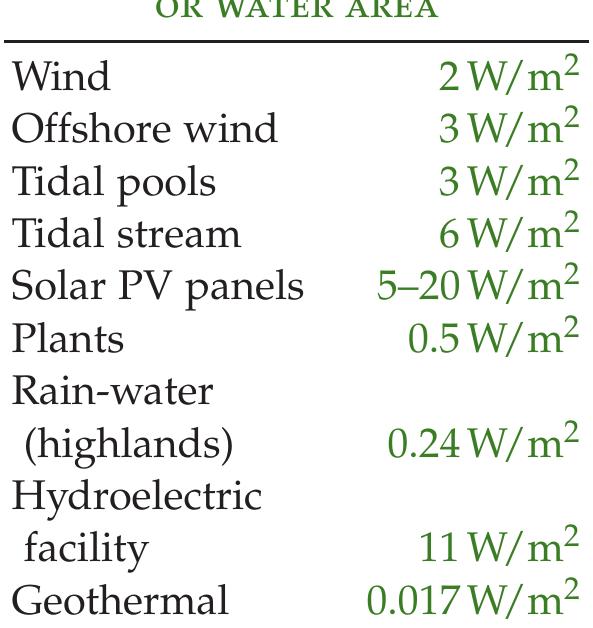






![Copyright David ] C MacKay 2009. This electronic copy is provided, free, for personal use only. See www.withouthotair.con](https://figures.academia-assets.com/51383627/figure_127.jpg)



















![Copyright David ] C MacKay 2009. This electronic copy is provided, free, for personal use only. See www.withouthotair.cor](https://figures.academia-assets.com/51383627/figure_146.jpg)






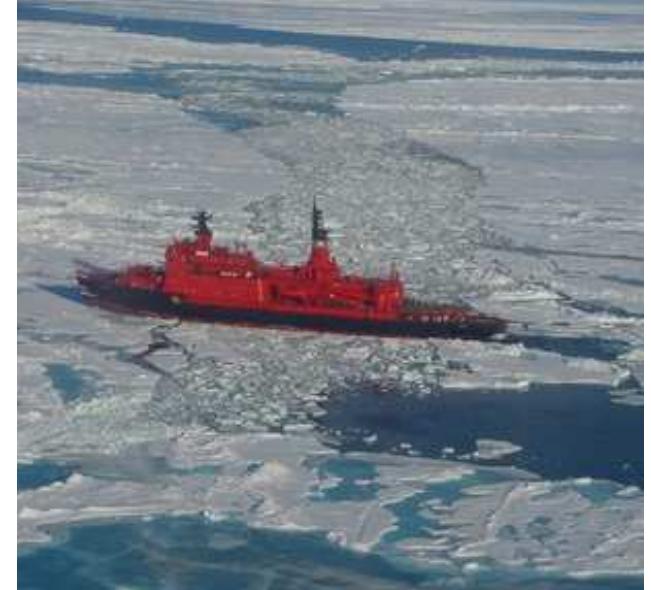















![Copyright David J] C MacKay 2009. This electronic copy is provided, free, for personal use only. See www.withouthotair.cor](https://figures.academia-assets.com/51383627/figure_168.jpg)

![Sopyright David ] C MacKay 2009. This electronic copy is provided, free, for personal use only. See www.withouthotair.cor](https://figures.academia-assets.com/51383627/figure_170.jpg)





![Copyright David ] C MacKay 2009. This electronic copy is provided, free, for personal use only. See www.withouthotair.com
Figure 21.10. Heat pumps.](https://figures.academia-assets.com/51383627/figure_176.jpg)

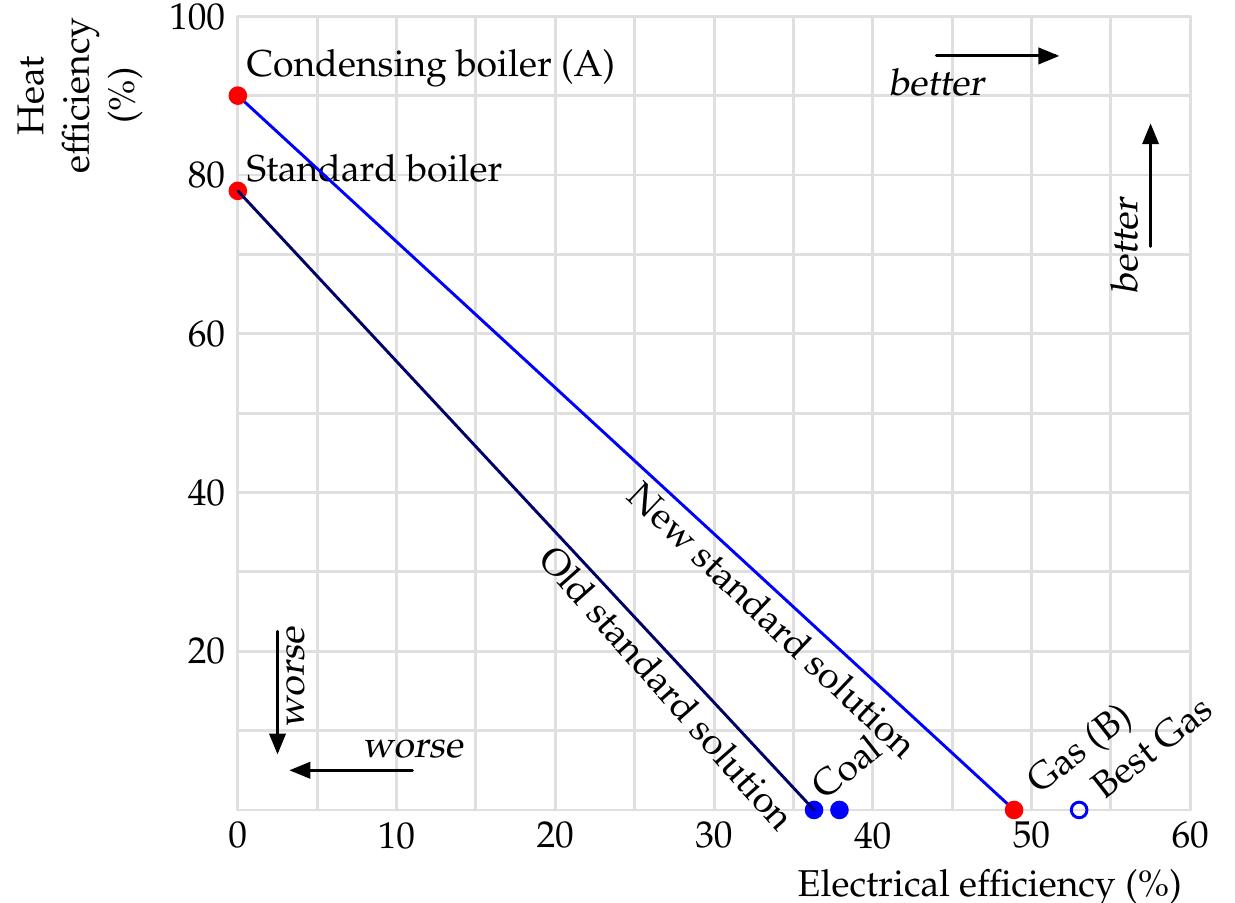






























![Copyright David ] C MacKay 2009. This electronic copy is provided, free, for personal use only. See www.withouthotair.cc](https://figures.academia-assets.com/51383627/figure_204.jpg)









![Copyright David J] C MacKay 2009. This electronic copy is provided, free, for personal use only. See www.withouthotair.com](https://figures.academia-assets.com/51383627/figure_213.jpg)











![-opyright David ] C MacKay 2009. This electronic copy is provided, free, for personal use only. See www.withouthotair.cor](https://figures.academia-assets.com/51383627/table_023.jpg)






![Copyright David ] C MacKay 2009. This electronic copy is provided, free, for personal use only. See www.withouthotair.com
Figure 27.9. All five plans.](https://figures.academia-assets.com/51383627/figure_229.jpg)









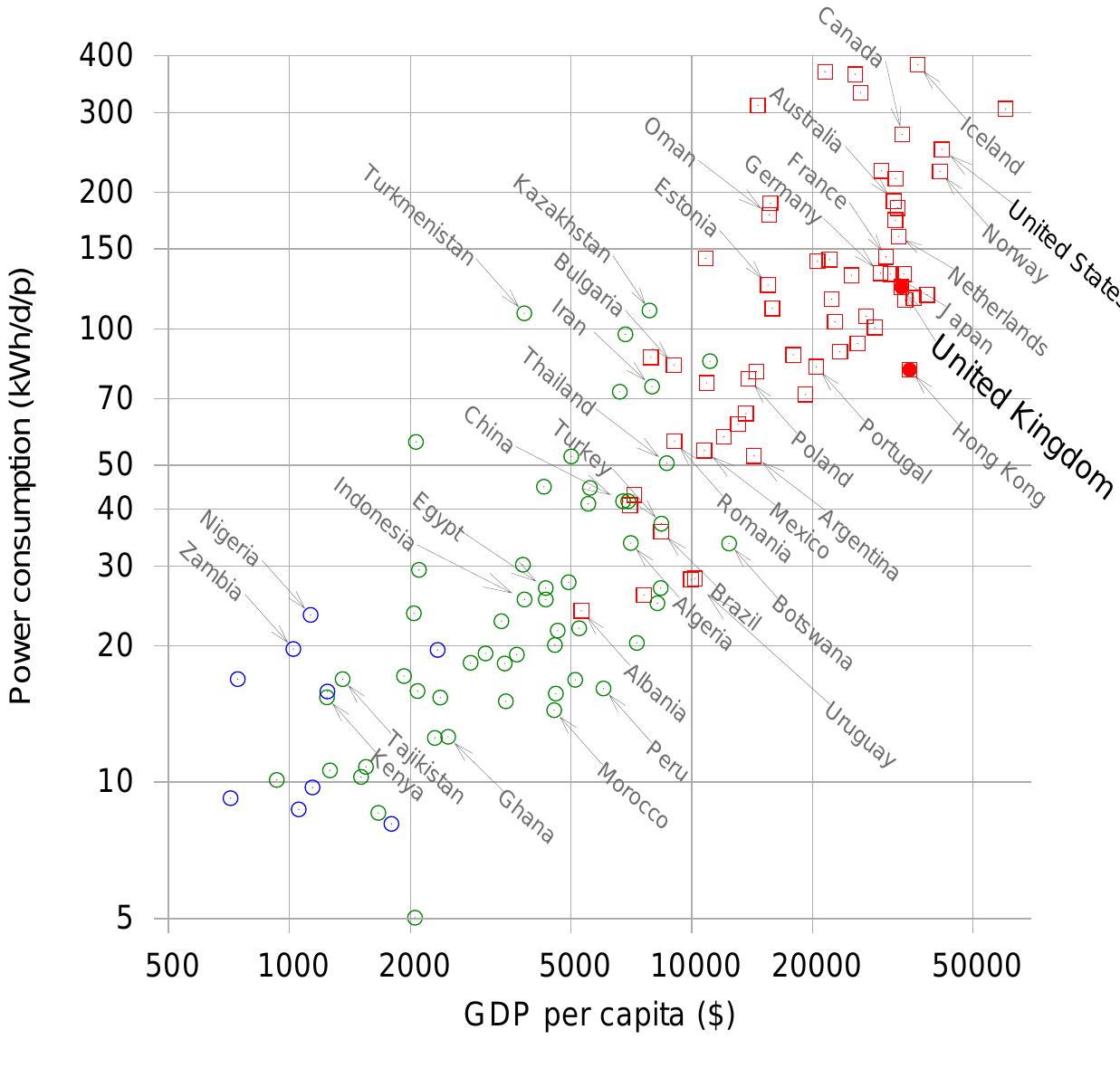


![Table 30.4. World sunniness figures.
[3doaeg]](https://figures.academia-assets.com/51383627/table_029.jpg)











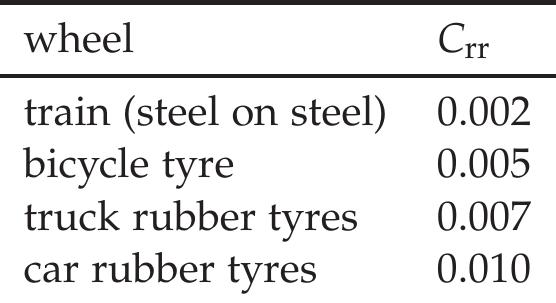



















![Copyright David J] C MacKay 2009. This electronic copy is provided, free, for personal use only. See www.withouthotair.com
and Newton’s third law, which I just mentioned:](https://figures.academia-assets.com/51383627/figure_263.jpg)








![Copyright David ] C MacKay 2009. This electronic copy is provided, free, for personal use only. See www.withouthotair.con
Figure C.13. Hydrofoil.
Photograph by Georgios Pazios.](https://figures.academia-assets.com/51383627/figure_271.jpg)









![Sopyright David |] C MacKay 2009. This electronic copy is provided, free, for personal use only. See www.withouthotair.cor](https://figures.academia-assets.com/51383627/figure_279.jpg)








![Copyright David ] C MacKay 2009. This electronic copy is provided, free, for personal use only. See www.withouthotair.cor](https://figures.academia-assets.com/51383627/figure_287.jpg)


















![Copyright David ] C MacKay 2009. This electronic copy is provided, free, for personal use only. See www.withouthotair.con
Figure H.2. Imports of stuff to the UK,
2006.](https://figures.academia-assets.com/51383627/figure_298.jpg)













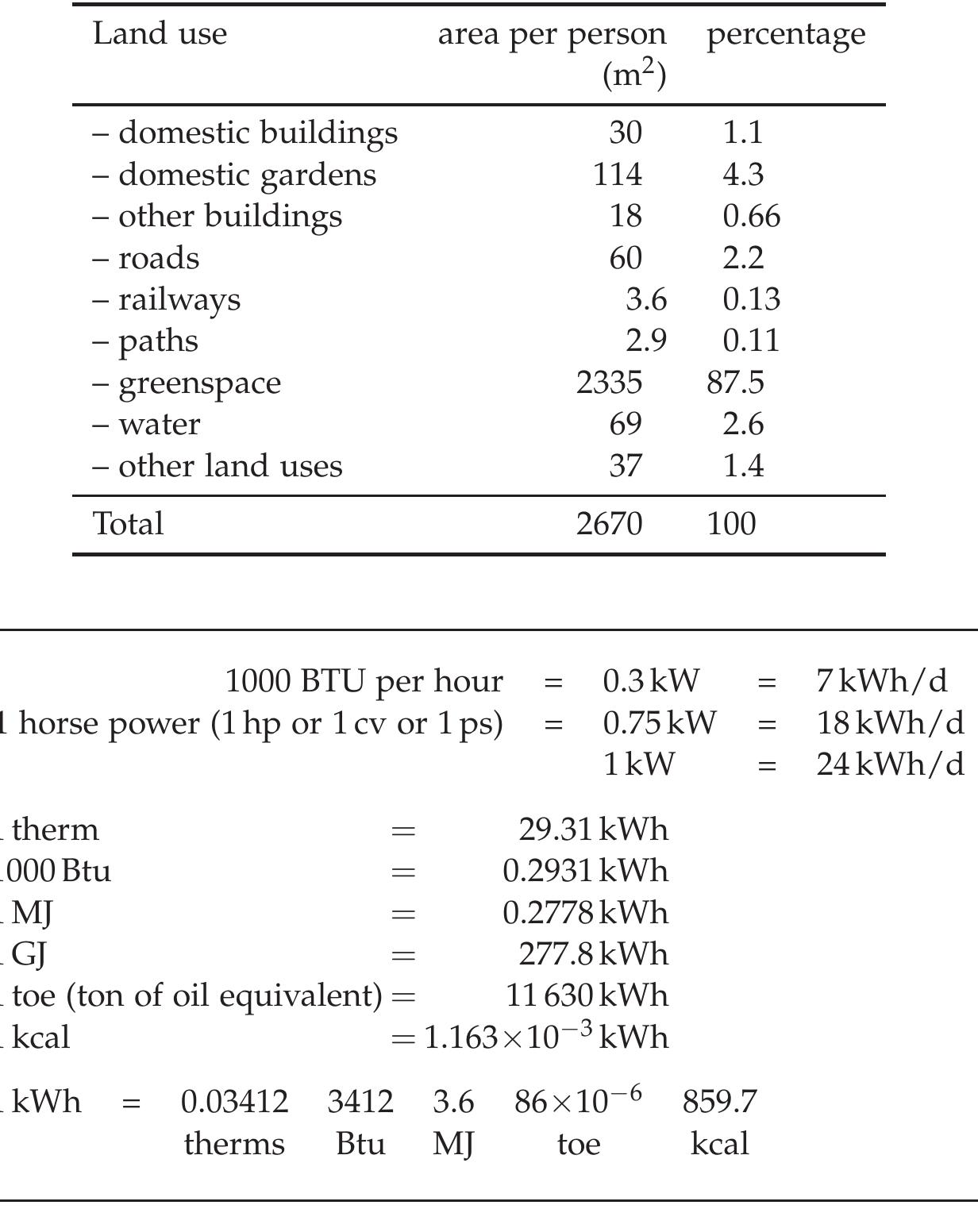




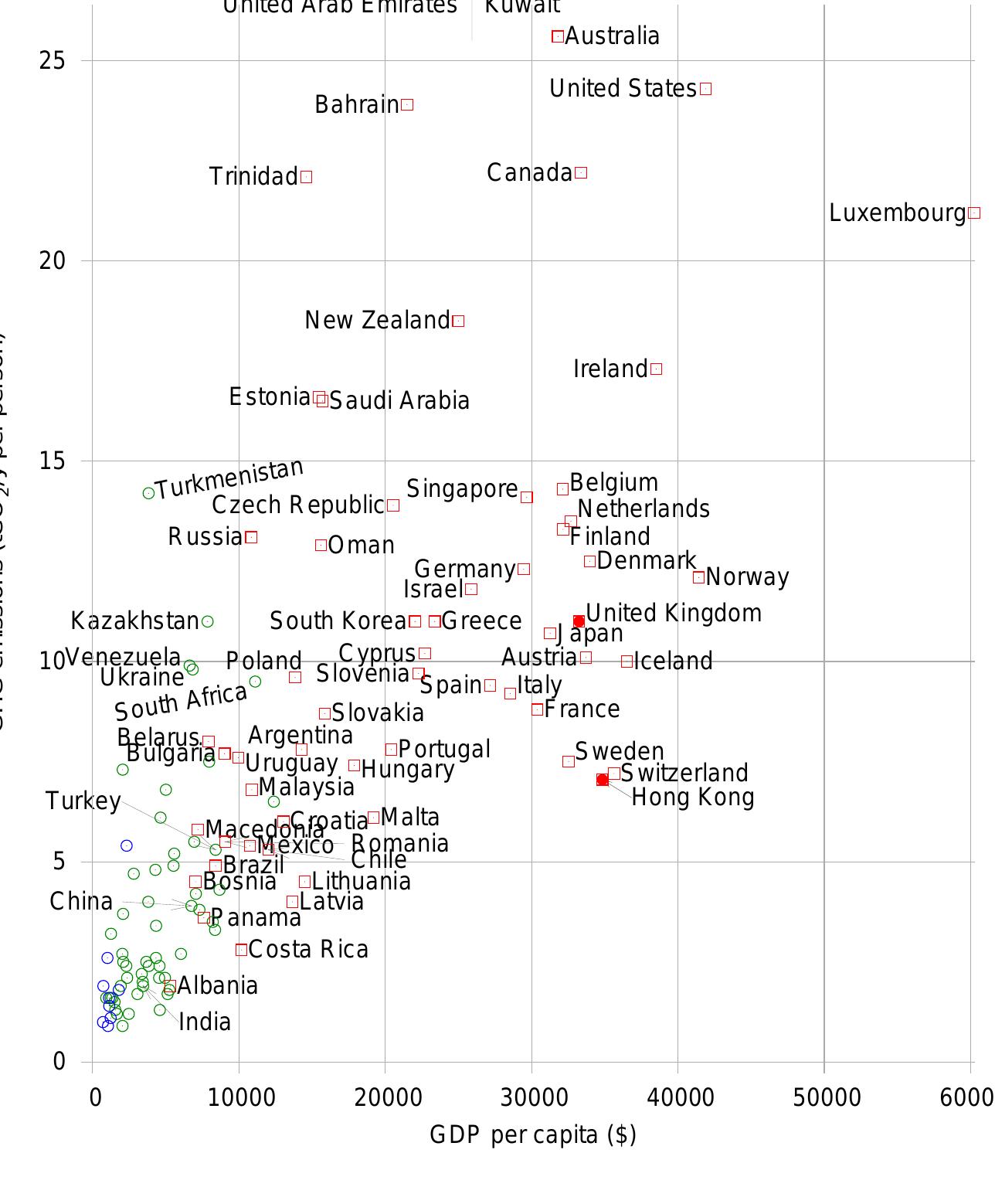










![-opyright David |] C MacKay 2009. This electronic copy is provided, free, for personal use only. See www.withouthotair.cor](https://figures.academia-assets.com/51383627/table_063.jpg)



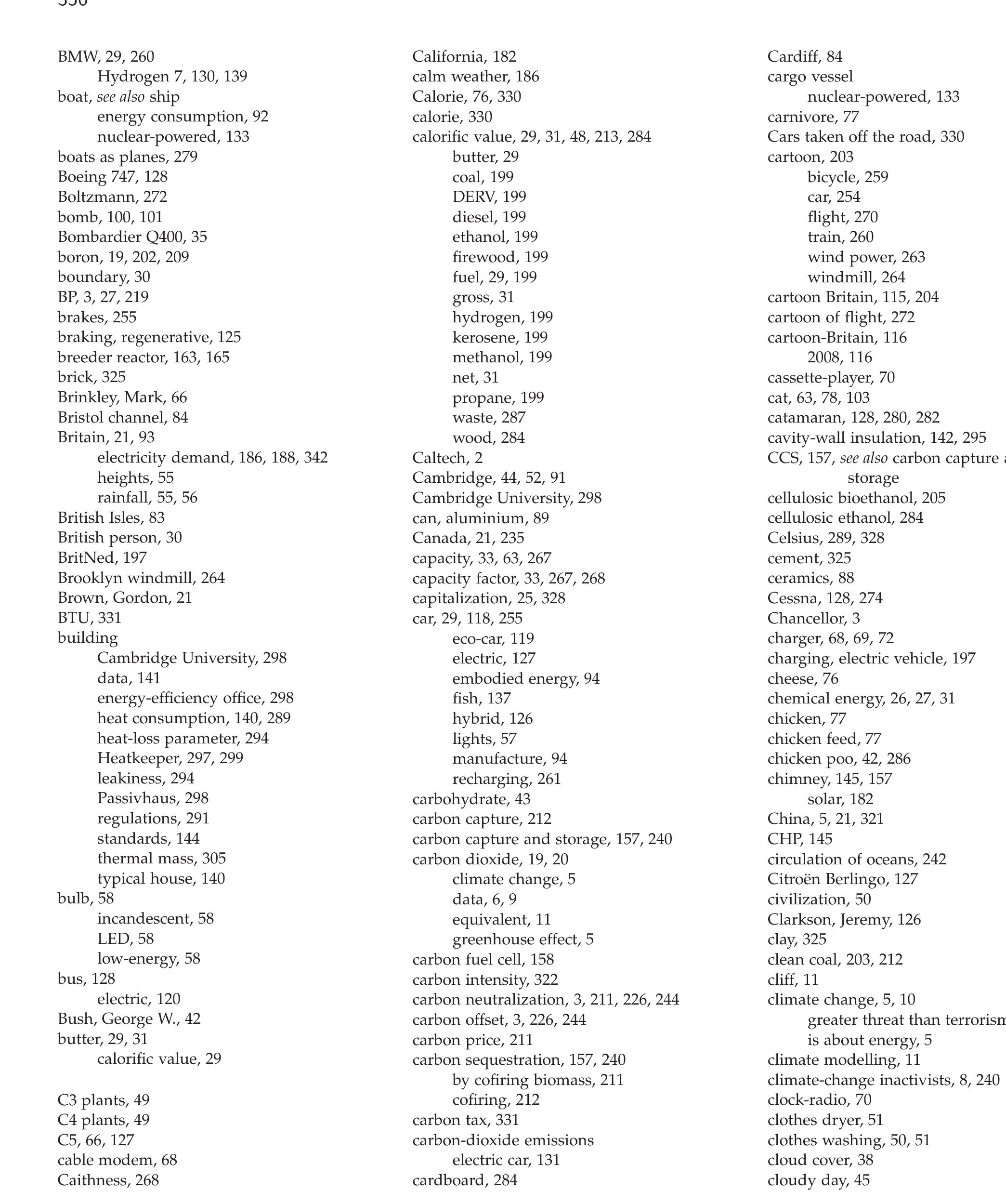




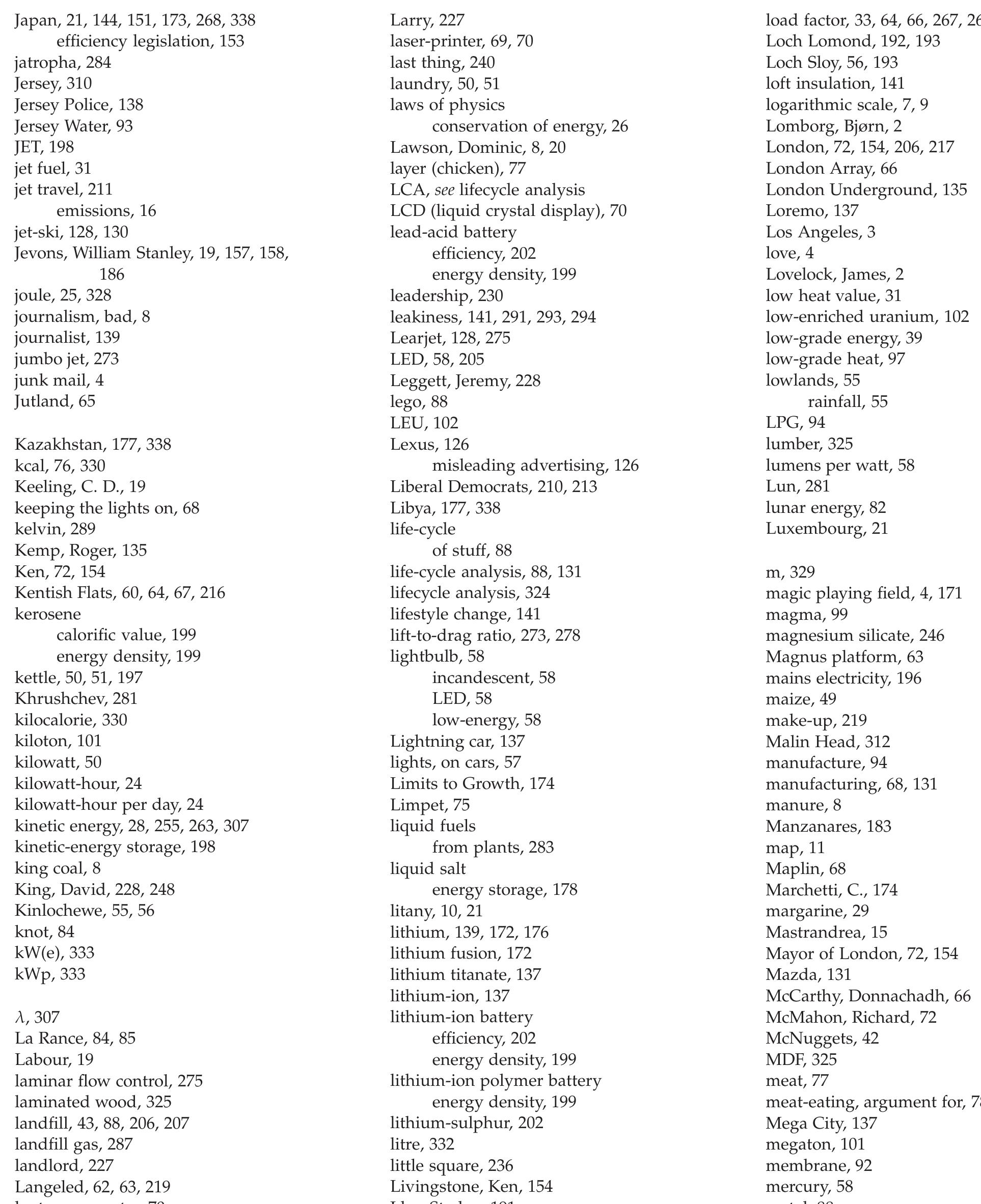



![‘opyright David ] C MacKay 2009. This electronic copy is provided, free, for personal use only. See www.withouthotair.cor](https://figures.academia-assets.com/51383627/table_076.jpg)



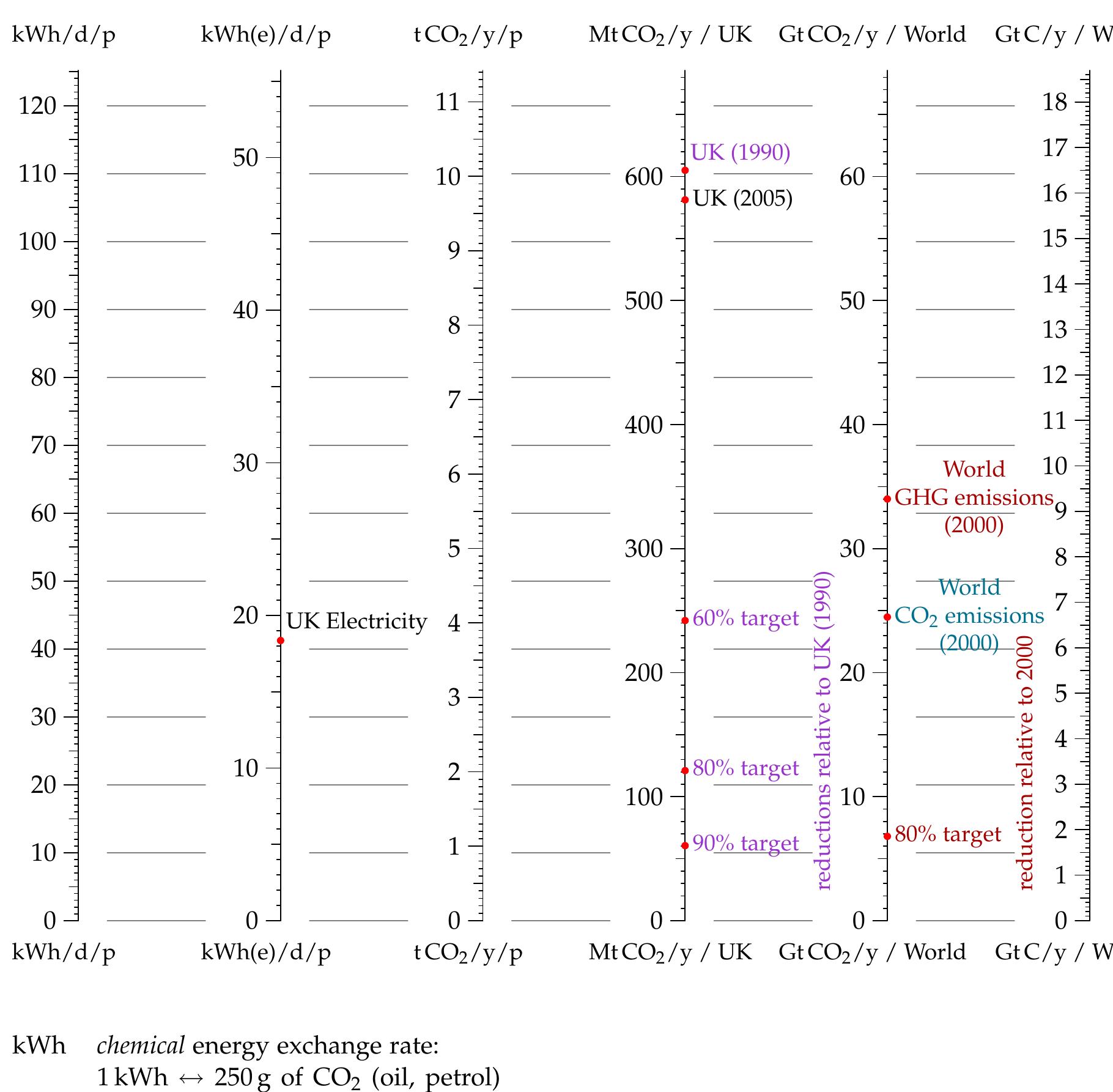
Related papers
American Journal of Physics, 2010
The quest for safe, secure and sustainable energy poses one of the most critical challenges of our age. But how much energy do we need, and can we get it all from renewable sources? David MacKay sets out to find the answer through a forensic numerical analysis of what we use and what we can produce. His conclusions starkly reveal the difficult choices that must urgently be taken and readers interested in how we will power our society in the future will find this an illuminating read. For anyone with influence on energy policy, whether in government, business or a campaign group, this book should be compulsory reading. This is a technically precise and readable account of the challenges ahead. It will be a core reference on my shelf for many years to come.
Numeracy, 2016
David MacKay. Sustainable Energy: Without the hot air. (Cambridge, England: UIT Cambridge Ltd., 2009). 384 pp. ISBN 978-0954452933 (also available as a free e-book). Physicist David MacKay transforms what has historically been a debate fraught with skepticism and hysteria into an informed conversation. He does this by providing clear, accurate quantitative information on energy production and consumption in a form that allows comparison and invites thoughtful analysis. By recalibrating power into kilowatt-hours per day per person, he makes the numbers meaningful on an individual level. He then meticulously estimates the productive capacity of various renewable energy sources, explores alternative energy solutions, and ends with an array of concrete plans to get the planet off fossil fuels for good.
Nature Energy, 2017
Geographical Locality Studies, 2016
The aim of this article originally was to discuss energy-related challenges in the United Kingdom, reflecting especially on a post-Brexit era. The topic, however, quickly evolved into a thorough energetic overview of the British Isles and it involves the entire analysation of the locally available energy resources including both non-renewables and renewables. Whilst the paper is focusing on the availability, utilisation and energetic importance of all of these local resources written in a school textbook style, it also ventures into understanding the reasons behind their decline or growing usage and how and why these have changed over the last few decades researched academically. It also attempts to compare energetic situations, such as electricity generation, to other European countries and focus-es on the importance of global cooperation , and international efforts to tackle, for example, environmental issues including climate change.
Global primary energy use is presently dominated by fossil fuels. But given the environmental resource and environmental challenges facing these fuels, alternatives must be sought. This chapter looks at each energy group—fossil fuels, nuclear energy and renewable energy—in turn. We argue that neither carbon sequestration nor geoengineering are feasible solutions for the climate effects of fossil fuels. Nuclear plays only a minor role in world energy production, and official forecasts show little change in market share. Renewable energy also faces a variety of challenges, particularly because the most promising sources, wind and solar energy, are intermittent, and will eventually require expensive energy storage. However, present fossil fuel use is very heavily subsidized, suggesting that removal of these subsidies would greatly reduce energy demand to a level renewable energy could meet.
Science & Engineering Faculty, 2007
This online textbook provides free access to a comprehensive education and training package that brings together the knowledge of how countries, specifically Australia, can achieve at least 60 percent cuts to greenhouse gas emissions by 2050. This resource has been developed in line with the activities of the CSIRO Energy Transformed Flagship research program, which is focused on research that will assist Australia to achieve this target. This training package provides industry, governments, business and households with the knowledge they need to realise at least 30 percent energy efficiency savings in the short term while providing a strong basis for further improvement. It also provides an updated overview of advances in low carbon technologies, renewable energy and sustainable transport to help achieve a sustainable energy future. While this education and training package has an Australian focus, it outlines sustainable energy strategies and provides links to numerous online reports which will assist climate change mitigation efforts globally.
Scientific American, 2009
John Lee Aurora Photos (wind farm); BiLL heinsohn Aurora Photos (dam) I n December leaders from around the world will meet in Copenhagen to try to agree on cutting back greenhouse gas emissions for decades to come. The most effective step to implement that goal would be a massive shift away from fossil fuels to clean, renewable energy sources. If leaders can have confidence that such a transformation is possible, they might commit to an historic agreement. We think they can. A year ago former vice president Al Gore threw down a gauntlet: to repower America with 100 percent carbon-free electricity within 10 years. As the two of us started to evaluate the feasibility of such a change, we took on an even larger challenge: to determine how 100 percent of the world's energy, for all purposes, could be supplied by wind, water and solar resources, by as early as 2030. Our plan is presented here. Scientists have been building to this moment for at least a decade, analyzing various pieces of the challenge. Most recently, a 2009 Stanford University study ranked energy systems according to their impacts on global warming, pollution, water supply, land use, wildlife and other concerns. The very best options were wind, solar, geothermal, tidal and hydroelectric power-all of which are driven by wind, water or sunlight (referred to as WWS). Nuclear power, coal with carbon capture, and ethanol were all poorer options, as were oil and natural gas. The study also found that battery-electric vehicles and hydrogen fuel-cell vehicles recharged by WWS options would largely eliminate pollution from the transportation sector. Our plan calls for millions of wind turbines, water machines and solar installations. The numbers are large, but the scale is not an insurmountable hurdle; society has achieved massive Wind, water and solar technologies can provide 100 percent of the world's energy, eliminating all fossil fuels. Here's How By mark Z. Jacobson
Springer eBooks, 2013
The use of general descriptive names, registered names, trademarks, service marks, etc. in this publication does not imply, even in the absence of a specifi c statement, that such names are exempt from the relevant protective laws and regulations and therefore free for general use.
Last issue (Part 1, Ecos 139) we explored the idea of Australia as a new type of 'energy superpower' capitalising, in today's carbon-constrained world, on technologically savvy, low-or no-carbon energy sources rather than our traditional reliance on non-renewable and greenhouse intensive energy sources, such as coal.
Related papers
The Future of Sustainable Energy: The Green Transigion for europe's regions. What are the obstacles, chalenges and opportunities?, 2018
With widespread environmental concerns across Europe, sustainable energy is a recurring subject in public debates and discussions. The production of renewable energy is more environmentally friendly and usually safer, and its development is key to tackling climate change and ensuring energy diversification for European nations. We already possess the capacity and the know-how to make the green energy transition technologically and economically viable. Biomass, concentrated solar power, geothermal energy, hydropower, tidal energy, wave energy and wind turbines all have huge potential for Europe. But their development remains limited. There are several socio-political factors hindering the green energy transition. First, the political situation in a country can be detrimental to the development of sustainable energy, particularly where there is a degree of instability or insecurity, or systemic problems. The insecurity caused by Brexit, for instance, results in fewer investments, making the transition to renewable energy complicated for regions like Yorkshire. A low level of awareness and public support in certain areas can also make it hard to achieve set goals and to implement renewable energy policies. In Galicia, there is a lack of public information available: civil society lacks knowledge about the benefits of renewable energy sources and subsequently, the benefits of supporting these energies. A lack of urgency is also a factor, slowing down the green energy transition even when the technology and financial resources are already available. Some governments do not express the urgency of transitioning to renewable energy, so society does not perceive it to be an urgent matter. Finally, some nations may prefer other energy sources, perhaps because of tradition or because they have been the targets of lobbying from the non-renewable energy sector. The historical and cultural importance of coal in Silesia, for example, is an obstacle to the transition towards renewable energy. Why look into sustainable energy? With widespread environmental concerns across Europe, sustainable energy is a recurring subject in public debates and discussions. The production of renewable energy is more environmentally friendly and usually safer, and its development is key to tackling climate change and ensuring energy diversification for European nations. We already possess the capacity and the know-how to make the green energy transition technologically and economically viable. Biomass, concentrated solar power, geothermal energy, hydropower, tidal energy, wave energy and wind turbines all have huge potential for Europe. But their development remains limited. How come renewable energies are still so marginally used at a European level? There are several socio-political factors hindering the green energy transition. First, the political situation in a country can be detrimental to the development of sustainable energy, particularly where there is a degree of instability or insecurity, or systemic problems. The insecurity caused by Brexit, for instance, results in fewer investments, making the transition to renewable energy complicated for regions like Yorkshire. A low level of awareness and public support in certain areas can also make it hard to achieve set goals and to implement renewable energy policies. In Galicia, there is a lack of public information available: civil society lacks knowledge about the benefits of renewable energy sources and subsequently, the benefits of supporting these energies. A lack of urgency is also a factor, slowing down the green energy transition even when the technology and financial resources are already available. Some governments do not express the urgency of transitioning to renewable energy, so society does not perceive it to be an urgent matter. Finally, some nations may prefer other energy sources, perhaps because of tradition or because they have been the targets of lobbying from the non-renewable energy sector. The historical and cultural importance of coal in Silesia, for example, is an obstacle to the transition towards renewable energy. What can be done about it? To overcome these obstacles, European nations must set ambitious policy targets and create real incentives to encourage the transition to sustainable energy. Ultimately the solution to the green transition is both social and political. It is about strengthening democracy and political systems, and making the process a truly inclusive and participatory one, allowing all voices and concerns to be heard. So that sustainable energy solutions are found at the local level and adapted to local contexts.
Centre for Alternative Technology, www. …, 2007
The user has requested enhancement of the downloaded file.
2007
d.toke(at)bham.ac.uk 0044 (0)121 415 8616 Editor: Miguel Mendonç ca Researcher and Campaigner World Future Council miguel(at)@ @ worldfuturecouncil.org 0044 (0)117 377 4315 World Future Council (UK office
UK Energy Research …, 2009
Meeting global energy needs in a sustainable and environmentally responsible way is one of the grand challenges of our time. While the use of energy based on fossil fuels has enabled great advances and an increase in the standard of living, it has also brought us to the brink of an environmental catastrophe. As a society, we will need to develop strategies that integrate renewable and sustainable energy sources. We must also engage and partner with policy makers in order to articulate an energy policy that is not only scientifically and technically sound, but also one that the global society will accept. The energy challenge is the type of problem that we, as a global society, have never faced before and we need decisive scientific and political leadership to address it. We must accept the challenge and insist that our leaders articulate a global energy policy capable of meeting such a challenge. (Image created by Alice Muhlback and used with permission.) E nergy: its mere sound evokes a broad range of reactions depending on our experience, education, political affiliation , and many other factors. The word is part of our everyday lexicon in terms of the cost of energy (when we actually mean the cost of fuel), global availability of energy and the inevitable geo-political analysis, the environmental consequences of energy use, carbon footprint, global warming, emerging economies, population growth...you get the idea. Energy is part of virtually every aspect of our lives, local and global. Energy is also a subject of big numbers such as "quads" (quadrillion BTUs), Terawatt-years, and gigatons (usually of generated CO 2). As chemists, actually as citizens (better yet, as informed citizens), we need to grapple with these concepts and the magnitude of these numbers to get a realistic assessment of what they mean and how our collective behavior affects them and the future of our planet. (See Figure 1.) Energy availability, in a reliable and inexpensive way, has been key to technological advances and innovation, which, in turn, have enhanced our standard of living. One can readily identify and acknowledge that developments such as the steam engine, the incandescent lamp, the internal combustion engine and the computer, just to name a few, have transformed the way we live and interact with each other. All of them have a common thread of depending on an energy source, albeit different in each case, to accomplish a particular function. This brings us to the description of energy in terms closer to those associated with thermodynamics, mainly as the ability to do work. So the question is, how are all of these issues interrelated, and what role do we, collectively, play?
Energy is a basic human need and without it, everything would come to a standstill. It is a necessary factor in fostering human development and economic growth in a secure, affordable, reliable, clean, and sustainable energy supply. Presently, we face monumental challenges: global warming, the waning of natural resources, explosions in population growth, increasing energy demand, rising energy prices, and unequal distribution of energy sources. These factors contribute to the urgent need to transform the energy sector -which primarily relies on fossil fuels to alternative energy sources (i.e.-to one that uses renewable energies and energy efficient measures).
2013
2014
Purpose -.To show that (a) the observed strong link between global economic output and primary energy use will continue in future, and (b) neither attempts to replace fossil fuels with alternative energy sources nor geoengineering approaches can provide the level of clean energy that economic growth needs. Global economic growth therefore cannot continue for much longer. Design/methodology/approach -.The paper uses historical and recent global data (2012) for energy output from various sources, economic output, and CO 2 , emissions to make its case. Findings -.Alternative energy output is growing too slowly, and faces too many problems, to significantly change the energy mix in the coming decades. Continued use of fossil fuels requires either massive CO 2 removal/sequestration or global solar radiation management. The first is too expensive and would take decades to be significant, the second carries risks, some already known and possibly also unknown ones. Practical implications -. The paper makes the case that technical fixes such as alternative fuels, energy efficiency improvements, carbon dioxide capture and solar radiation management will not be sufficient to prevent global climate change. Social implications -.Social change, rather than reliance on technical fixes, is needed for ecologically sustainable economies. Originality/value -.Most research argues that global energy intensity and carbon intensity will continue to fall. In contrast, we argue that the strong link observed between global economic output and primary energy use will continue.
Sustaining our Environment for Better Future, 2019
This research tries to highlight what is needed to be done for us and our future generations to create a sustainable mechanism that is green, scalable, and secure for the way we develop and obtain energy from a purely economic perspective. The debate today is about yields when it comes to solar, wind, and hydro-and geothermal paths in producing energy, a fact that is counterbalanced by nuclear energy and the traditional coal-based energy, which still have a better economic positioning and financial output than the renewable solutions. The authors will try to introduce also the states involvement in the process, from institutional, ideological, political, and pragmatic perspective. Regarding the outcome of this research, the emphasis will be on how the standard of living will be improved, not only for our generations but also for future ones.

Loading Preview
Sorry, preview is currently unavailable. You can download the paper by clicking the button above.
 Camila Marin Camargo
Camila Marin Camargo
